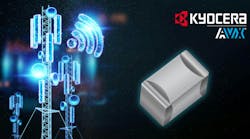The A6850 is a dual-channel switch interface IC designed to simplify the implementation of a 2-wire Hall-effect sensor system. This new device eliminates the need for an external sense resistor and comparator thereby reducing system costs. The elimination of the sense resistor also results in a subsequent elimination of the voltage drop across the resistor, which can enable sensing systems to operate down to lower battery voltages. The A6850 offers 2 channels integrated on a single IC as well as benefits such as current clamping, thermal protection, and low operating current (SLEEP) mode. It's rated over a wide operating voltage and temperature range making this part an excellent fit for various automotive sensing systems.
It uses protected high-side low-resistance DMOS MOSFETs to switch the supply voltage to the two Hall-effect devices. Each switch can be controlled independently via individual enable pins and both switches are protected with current-limiting circuitry. The output switches are rated to operate to 26.5V and will source at least 25 mA per channel before current limiting.
Typical 2-wire Hall sensor applications require the user to measure the supply current to determine whether the Hall sensor is switched on (magnetic field present) or switched off (no magnetic field present). This is usually accomplished by using an external series shunt resistor. The A6850 eliminates the need for the external series shunt resistor by incorporating an integrated current mirror which reports the Hall sensor supply current as a 1/10 value on the SENSE1 or SENSE2 output pin. A low current sleep mode is available (<15 µA) by driving both enable pins low. Also, the A6850 can be used to interface with mechanical switches.
- Dual channel with independent control
- Low voltage drop with high-side low resistance sensing
- Built in protection and diagnostics for open or shorts
- Output current limiting on each channel
- Low operating and sleep mode currents





